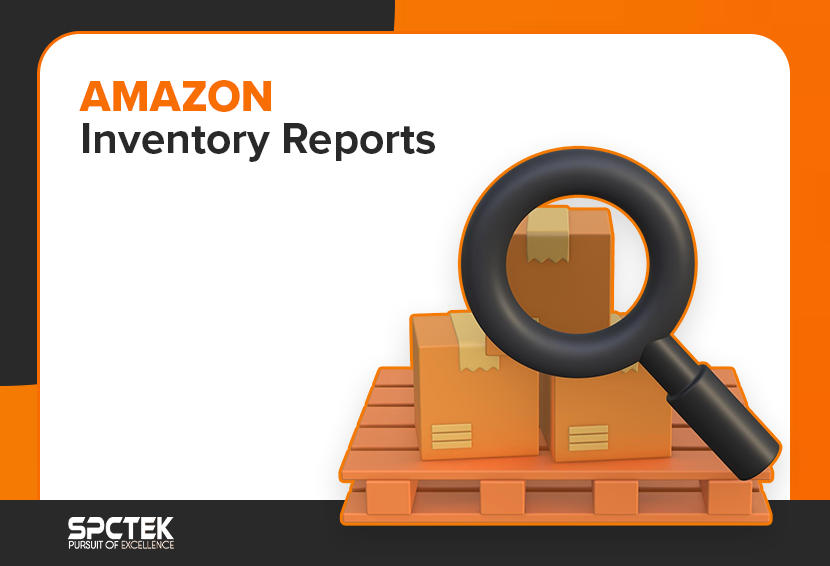If you’re running an Amazon business, the only way to run it successfully is with actionable data. Instincts don’t usually pay off in this business. And when it comes to monitoring your stock and keeping tabs on demand and supply (one of the most crucial aspects of your business), making data- and non-data-backed decisions is like life and death.
Luckily, Amazon gives you all the data you need to make informed inventory management decisions. (Also luckily) In this post, we’ll walk you through the different types of Amazon inventory reports you can download from Amazon. We’ll also look at how you can use these reports to your advantage.
What is an Amazon Inventory Report?
An Amazon inventory report is simply a snapshot of your inventory. It provides you with a summary of the products that you have listed to sell on Amazon, including the stock-keeping unit (SKU), price, quantity, and ASIN for each of your current listings.
However, the data that you get is from the time you requested the report and might be a bit behind the times when you actually receive it. So, it is advisable to compare your Amazon orders and inventory reports to your own inventory records.
The Amazon inventory reports are available on your account for 30 days; they are taken down after the 30-day period.

Also Read: Bulk Updating Amazon Inventory Simplified: A Step-by-Step Tutorial
Types of Amazon Inventory Reports
Based on your needs, Amazon provides you with the following types of reports to choose from:
- Active listings report: A complete summary of your active product listings on Amazon, even those listings that have no inventory.
- Canceled listings report: This report details all your listings canceled by Amazon.
- Open listings report: It consists of any current open listings available through the merchant-fulfilled channel.
- All listings report: This gives you a complete list of all your products, including listings that are active, inactive, and incomplete.
- Sold listings report: This report contains the details of items you sold on Amazon.
- Inactive listings report: This report provides details about all your inactive products; it’s the opposite of the active listings report.
- Listing quality and suppressed listing report: It contains listings with quality errors. Listings that have crucial errors are suppressed or hidden from search until you fix the errors.
If you are an FBA seller, Amazon provides you with the following additional reports:
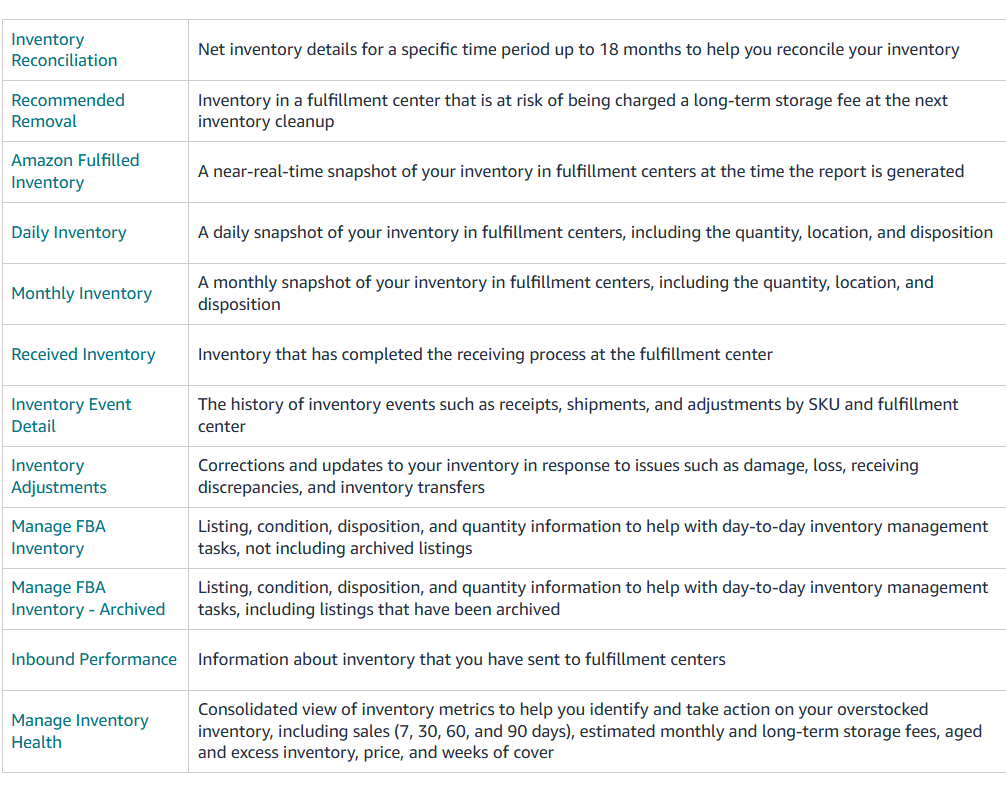
Additional Types of Reports for FBA Sellers
Report Overload: Which Ones Matter?
As we’ve seen, there’s a whole bunch of Amazon inventory reports that you can request and download, but that doesn’t mean you should be nerding out over all of them. Although all types of reports have some value, certain ones require greater attention.
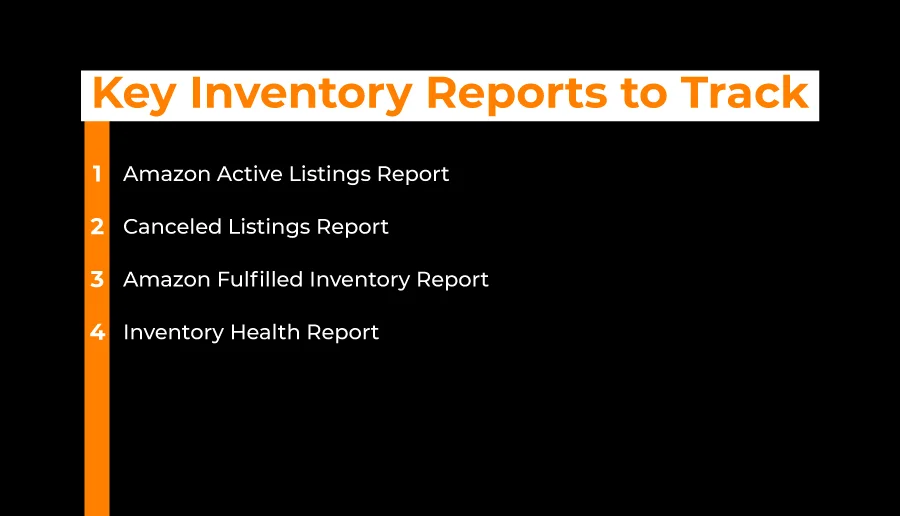
1. Amazon Active Listings Report
This is the most important one to keep an eye on because it contains the most valuable information. It gives you a rundown on all your Amazon listings, even those with zero inventory. Moreover, it also gives you information about products on Amazon that match your listings.
The report contains 27 columns, among which some might be empty. The columns that provide key information are as follows:
- Item-name: This column shows the product title of your Amazon listings. It only displays 80 characters, so longer titles will be truncated.
- Item-description: This column shows the product description of your listings.
- Listing-id: It shows the internal IDs created by Amazon for your product listings.
- Seller-SKU: This field provides details of the SKUs assigned to your listings.
- Quantity: This field shows the number of available units for your products.
- Price: This field shows the product price without mentioning the currency.
- Open date: This field shows the date and time of the listing creation. It is displayed in the YYYY-MM-DD HH-MM-SS format.
- Product-id-type: Like the listing ID field, it shows the ID automatically generated when you create a listing.
- Asin: This field shows the ASIN of the listed item.
- Will-ship-internationally: This field shows your international shipping settings, 1 = Yes, and 0 = No.
- Product-ID: This shows the type of product-ID that’s referred to. For example, whether the product ID is ASIN, ISBN, EAN/UPC, etc.
- Fulfillment-channel: This field shows your fulfillment method. Amazon means FBA, and Default means fulfilled by the seller/merchant.

Source: Amazon
The active listing report allows you to update, edit, and delete data through an inventory loader file, so you don’t have to edit each listing individually.
This is an extremely valuable report, as it gives you a rundown of whether all your active listings are properly listed and sufficiently stocked.
2. Canceled Listings Report
As the name suggests, this Amazon inventory report provides details of the listings that Amazon has canceled, disabled, or blocked. You can see why it’s important: you need to know which of your listings are blocked and do something to fix them.
The report does not include the listings with zero inventory, removed using the inventory loader, or canceled by the seller. It also doesn’t give you the reason for the cancellation. Regardless of these constraints, it’s still crucial to track your canceled listings and fix them so they are up for sale again.
You can generate the canceled listings report as frequently–daily, weekly, or monthly–as you need to track your listings. Frequent monitoring ensures that your products are always in business and aren’t just collecting dust in the warehouse.
3. Amazon Fulfilled Inventory Report
This Amazon inventory report is only available to FBA sellers. If you’re using FBA, this report will give you a peek into the status of your inventory in Amazon’s fulfillment centers.
Amazon FBA inventory report helps you stay updated on your product’s current stock levels and condition in the warehouse. You can also access insights about managing your Fulfillment by Amazon (FBA) inventory, like adjusting quantities or removing listings, while keeping other inventory requirements balanced.
4. Inventory Health Report
This report is also accessible to FBA sellers only. The Inventory Health Report gives you an all-around overview of your sales, sellable products, aged inventory, and stock levels.
Despite the data being 24-72 hours behind the times, this Amazon inventory report gives you an idea of when you need to restock based on your sales velocity. This is really important to avoid over- and under-stocking and maintain a healthy inventory level.
Maintaining your inventory health plays a big role in snagging the Buy Box, so it’s worth checking this report regularly. It gives you a breakdown of key details like SKU, ASIN, product name, condition (new or used), sales rank, and category.
The report also highlights your inventory age, grouping items based on how long they’ve been in the fulfillment center: 0-90 days, 91-180 days, and so on, up to over a year. Plus, it flags products that might rack up long-term storage fees.
Also Read: 10 Strategies for Amazon Inventory Management: Updated Guide
How Amazon Inventory Reports Keep Your Business on Track
So, what do you get out of all this tedious data? Well, you don’t want to be clueless about what’s in the warehouse and what’s not.
Amazon Inventory Reports give you an accurate view of the most crucial inventory-related information, including the stock level, status of the stocked items, pricing details, sales velocity, and canceled/inactive listings. Staying up to date with inventory reports helps you manage your Amazon business in three important ways:
Keeping Track of Your Listings
Amazon inventory reports give you a rundown of all the goods currently in stock. These reports contain SKU numbers, ASIN numbers, product descriptions, titles, quantity, and other vital pieces of information. They also tell you which listings are up for sale and which ones are inactive or canceled.
Also Read: The Do’s and Don’ts of Amazon Listing Title Optimization
Managing Pricing and Profits
Inventory reports show the cost of goods in stock, which is essential to track your earnings, especially profit margins–a ton of revenue without decent profit is not worth it. Every business has a different sales vs. profit philosophy; nonetheless, you can add the manufacturing price, selling price, and net profit to these reports. Most inventory reports have this information to give you a holistic view of your revenue and returns.
Also Read: Monitor Competitors’ Prices on Amazon: Benefits and Strategies
Keeping Inventory Stock Levels in Check
Tracking stock levels is the most crucial part of inventory management. You can’t create a reasonable restocking strategy without monitoring the inflow and outflow of your goods.
Amazon inventory reports enable you to monitor the number of units for each product in stock.
With these numbers, you can analyze how supply corresponds to demand, how much you’re spending on storage, and how to improve the stocking strategy. Without this data about how their inventory operates, you’ll lose sight of what’s happening with your inventory in no time.
Go Auto with Inventory Automation
Automation tools can help you enhance your listing and inventory monitoring. Tools like SellerSonar can detect when goods are out of stock and give you restock alerts. So, you always remain sufficiently stocked to meet the demand regardless of the sales velocity.
Moreover, tools like Openbridge make managing data easier by automating the process of connecting with the Amazon Fulfilled Inventory Report API. It organizes the data in one place, so you don’t have to manually download reports or worry about mistakes when combining or tracking them.
How to Generate Amazon Inventory Reports
Here is a brief step-by-step guide to generate and download Amazon inventory reports:
1. Log in to your Amazon Seller Central account.
2. Navigate to Inventory > Inventory Reports.
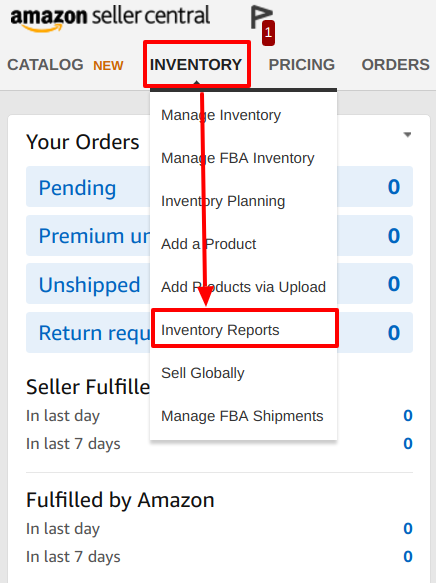
3. Select Report Type and select the report type you require.
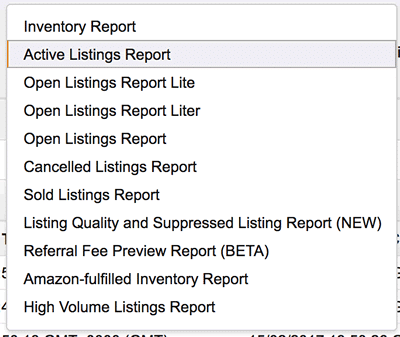
4. Select Request Report and wait for it to load in the Check Report Status Tab.
5. Click Download and choose your desired format (.csv or .txt) when the report is generated.
Amazon does not generate inventory reports instantly. Once you’ve requested Amazon to generate the report, it can take a few minutes to an hour before you can download the report as a .csv or .txt file. You can open the file using Microsoft Excel to print the Amazon inventory report in Excel format.

Final Words
Amazon inventory management is not a guessing game. With the variety of inventory reports available, you have all the tools to stay on top of your stock levels, pricing, and performance. Whether it’s tracking active listings, fixing canceled ones, or analyzing inventory health, these reports are your secret recipe for running a successful Amazon business.
Pair that with automation tools, and you’ll streamline data management while avoiding manual headaches. Stay proactive with your inventory, and (trust me) you’ll never be caught off guard by low stock or missed sales opportunities.
Got More Questions?
- Log in to your Amazon Seller Central account.
- Navigate to Inventory > Inventory Reports.
- Select the report type you need from the dropdown menu.
- Click Request Report and wait for it to generate.
- Once ready, download the report in your desired format (.csv or .txt).
After downloading the report as mentioned above, open it in a tool like Excel or Google Sheets. Then, clean and organize the data by removing irrelevant columns or rows, and analyze stock levels, pricing, and sales trends.
- Log in to Seller Central and go to Reports > Fulfillment.
- Under the Payments section, select Reimbursements.
- Download the report to see details on lost or damaged inventory that qualifies for reimbursement.
The Inventory Health Report and Amazon Fulfilled Inventory Report provide in-stock information. You can access these reports in Seller Central.
- Go to Reports > Fulfillment in Seller Central.
- Select the Monthly Inventory History Report for December or a custom date range.
- Generate and download the report to review end-of-year stock levels and performance.

